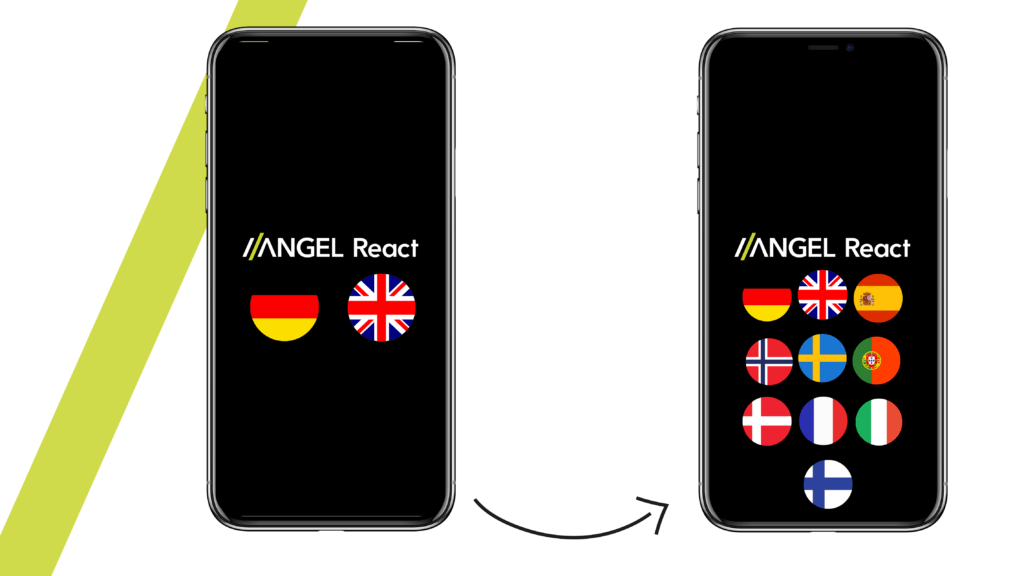We often see Jasmin with a sponge and a bowl of saline solution in hand. Because one of their tasks is to simulate the human sweating process to develop an insulation test for our ANGEL shirt subsequently. Why is that so important? Our ANGEL shirts must take a lot to function reliably.
“To be able to contribute to the topic of standardization would be cool.”
There are still no established processes and tests for quality assurance for smart textiles, and there are currently no standards. To meet the quality requirements that we put on our ANGEL shirt, we have to develop tests ourselves. And that is Jasmin’s job at the moment.
Born in Leverkusen, Germany, she spent four months researching with us for her master’s thesis entitled “Development of test methods to ensure the functionality of vital parameter measurement in smart textile systems using the example of the ANGEL shirt.” She is creating a quality assurance system for the ANGEL shirt and hopes that it will help to standardize the smart textiles sector.
She placed three test methods in the focus of her work.
The washing test with standardized parameters is generally known in the textile sector. Here it is checked over several washing cycles to what extent the textile changes due to frequent washing (e.g., does the textile shrink?). Jasmin used these parameters for the ANGEL shirt and checked the electrodes’ functionality and the conductor after each wash. So, she defined a new washing test for our ANGEL shirt, which meets the requirements for a smart textile. This is important so that the ANGEL shirt works reliably even after several washes.
Jasmin also developed an elastic test for the short sleeves of the ANGEL shirt. Because the electrodes on the cuffs must sit well on the skin, these cuffs must not wear out. Our master’s student ensures this in two ways: through an extended tensile test over 30 minutes (this simulates a typical wearing day) and a short tensile test over five cycles for extreme situations (e.g., tensing the biceps). For these experiments, she developed extra clamps for the vulnerable electrodes.
“It takes time for the tests to work the way you want them to.”
Jasmin devotes most of her time to developing an insulation test. This is about finding out how profuse sweating can affect the reliability of the ANGEL system. The electrical components of the ANGEL system are insulated against water. However, if the sweat still penetrates the textile conductor (which connects the two electrodes), something similar to a short circuit could arise. This would falsify the measurement for the detection of an electrical accident.
But sweating has to be adequately simulated. “When dyed textiles are tested in test laboratories for their reaction to sweat, they are usually drowned in a saltwater solution. But that does not correspond to the reality,” explains the young textile engineer. And that’s why she works with sponges because: Everyone sweats differently.
Jasmin also went unusual ways in her research, and she particularly enjoys this creative approach. “For example, we went out for a run with our ANGEL shirts to see how the sweat spreads out,” explains the 24-year-old with a laugh.
“The textile industry is old-fashioned, but smart textiles offer space for innovation.”
Jasmin has been actively looking for a smart textile company to supervise her master’s thesis. She sees the space for innovation and research in the smart textiles sector in particular. “Smart textiles help and are not only beautiful,” she explains her enthusiasm for this industry. The master’s student has always been very interested in math and generally has a wide range of interests. However, she developed an affinity for technology primarily during her studies and in the past few months. At ADRESYS, she can now expand her knowledge in smart textiles to expand electrotechnical knowledge because she finds expertise with her work colleagues. And when she visited Texible in Vorarlberg, our smart textiles partner company, she was able to help finalize an ANGEL shirt.
“I’ve learned that work can be fun.”
Jasmin is going back to Leverkusen in August. Then she wants to write down her research results in her master’s thesis. She leaves very well-documented instructions for her test series and takes away many positive experiences. “Fortunately, despite Corona, a lot was possible again during my time here, and I was able to take part in team events, roof terrace parties, and other fun rounds,” enthuses the young textile engineer. In general, she is enthusiastic about the good relationships in the ADRESYS team.
What did she learn? That she wants to do something in life that she enjoys. And that includes work, too — especially those with smart textiles.




 ANGEL React & ADRESYS
ANGEL React & ADRESYS  ANGEL React & ADRESYS
ANGEL React & ADRESYS  ANGEL React & ADRESYS
ANGEL React & ADRESYS